
How to Use Adafruit Charlieplex 9x16 Green: Examples, Pinouts, and Specs
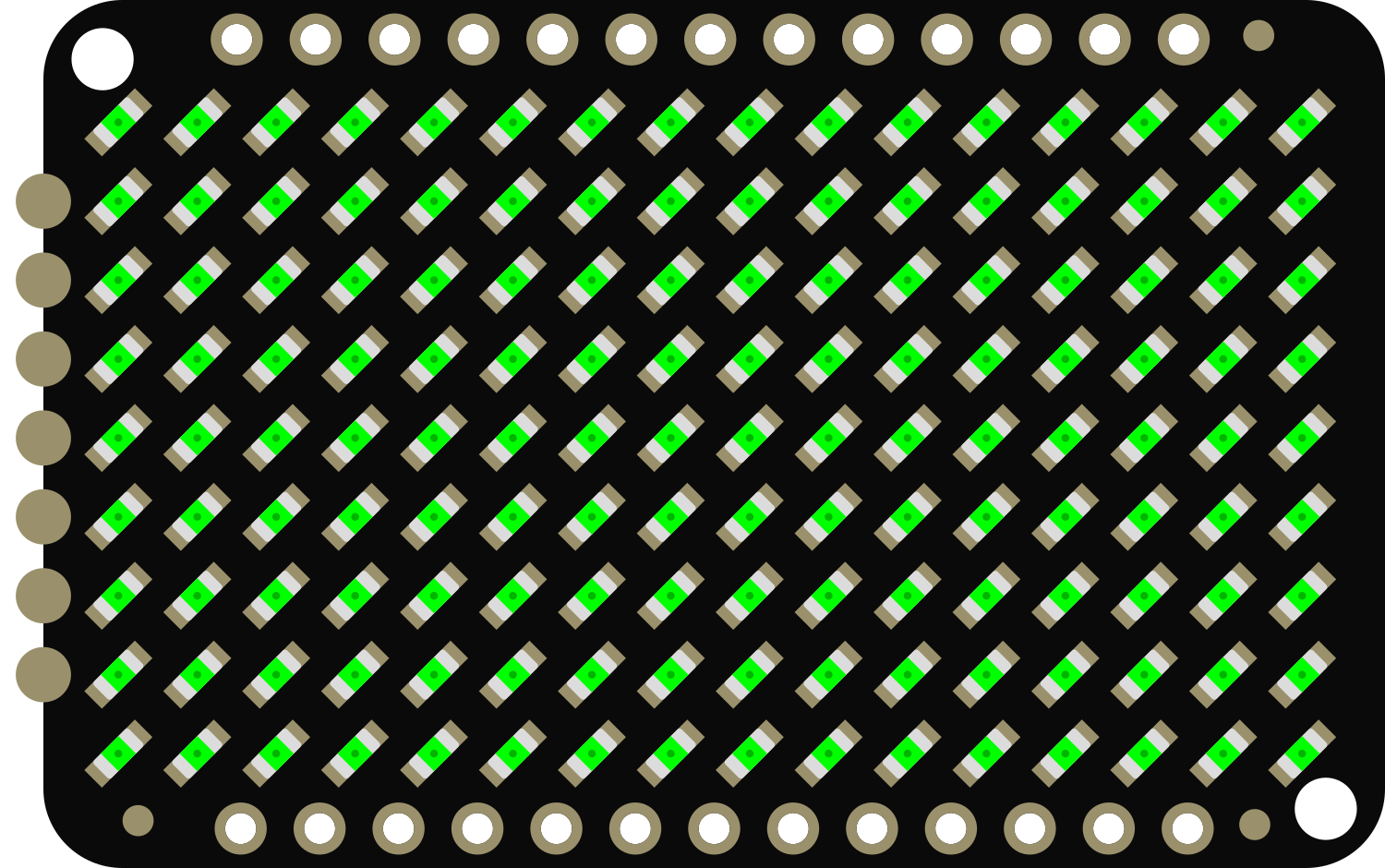
 Design with Adafruit Charlieplex 9x16 Green in Cirkit Designer
Design with Adafruit Charlieplex 9x16 Green in Cirkit DesignerIntroduction
The Adafruit Charlieplex 9x16 Green is a compact and versatile LED matrix driver board designed to control a 9x16 grid of green LEDs, totaling 144 individual LEDs. This board utilizes the Charlieplexing technique to enable control of many LEDs with a minimal number of microcontroller pins. It is ideal for creating dynamic displays, animations, and indicators for projects where space and pin count are at a premium.
Explore Projects Built with Adafruit Charlieplex 9x16 Green
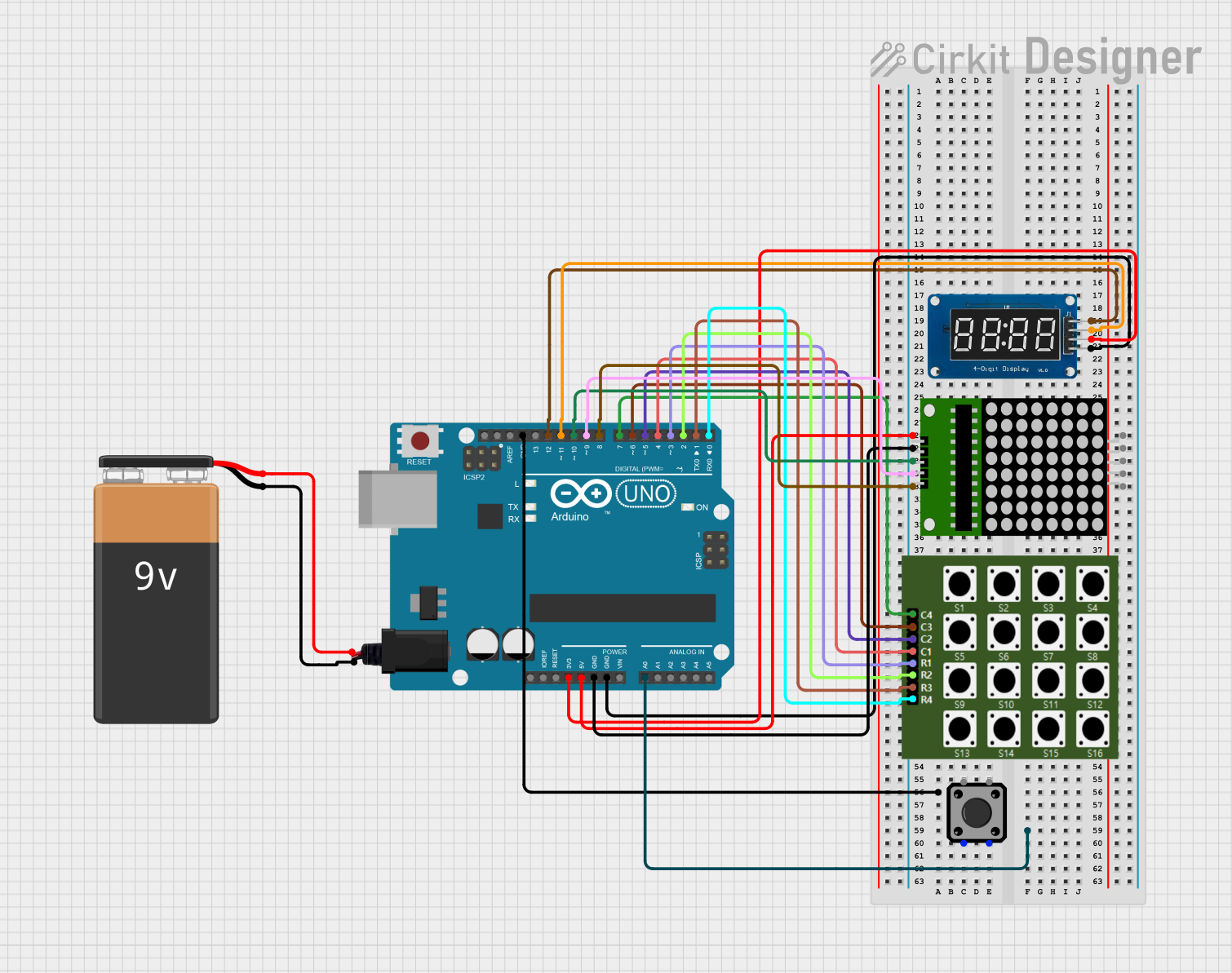
 Open Project in Cirkit Designer
Open Project in Cirkit Designer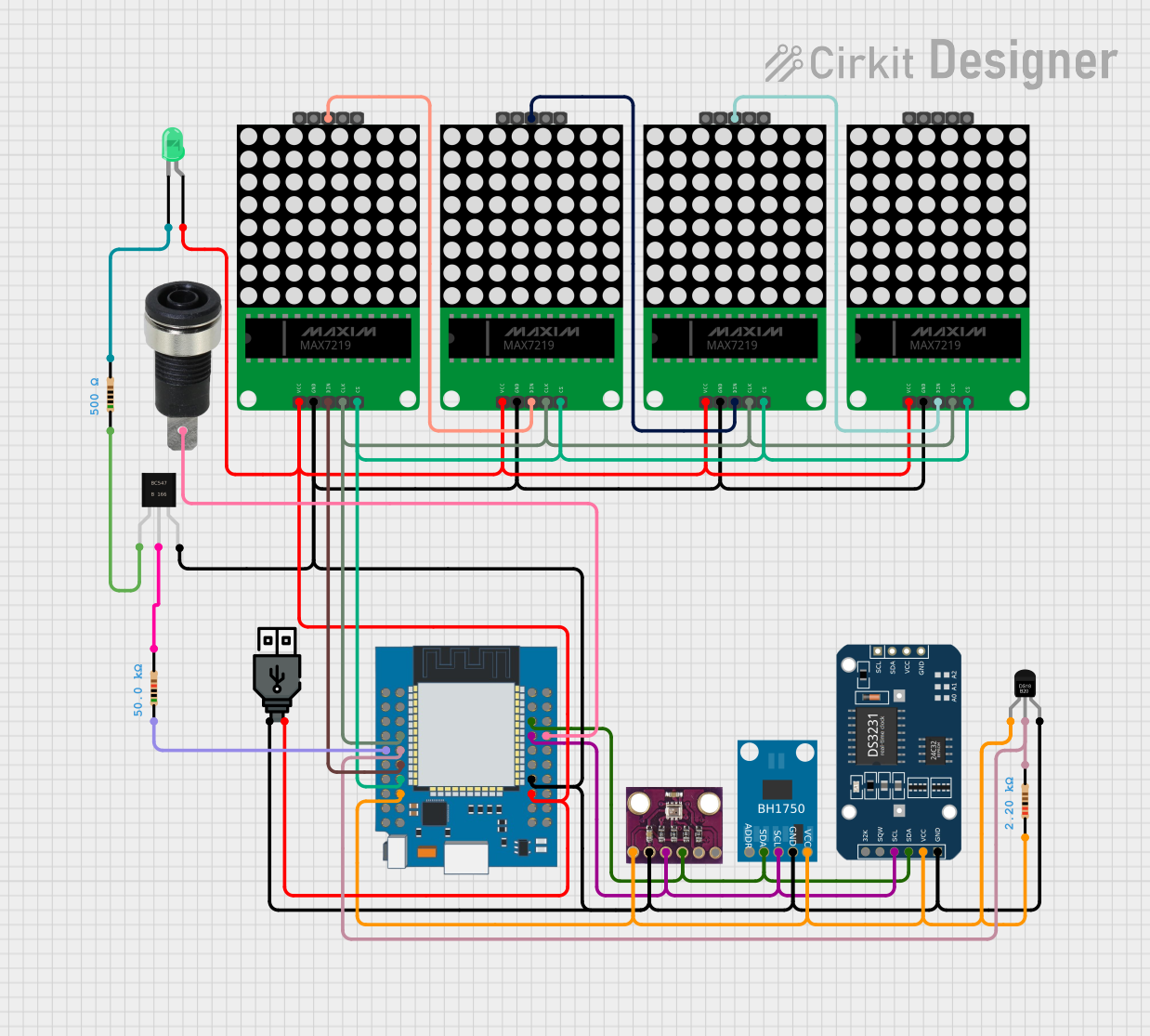
 Open Project in Cirkit Designer
Open Project in Cirkit Designer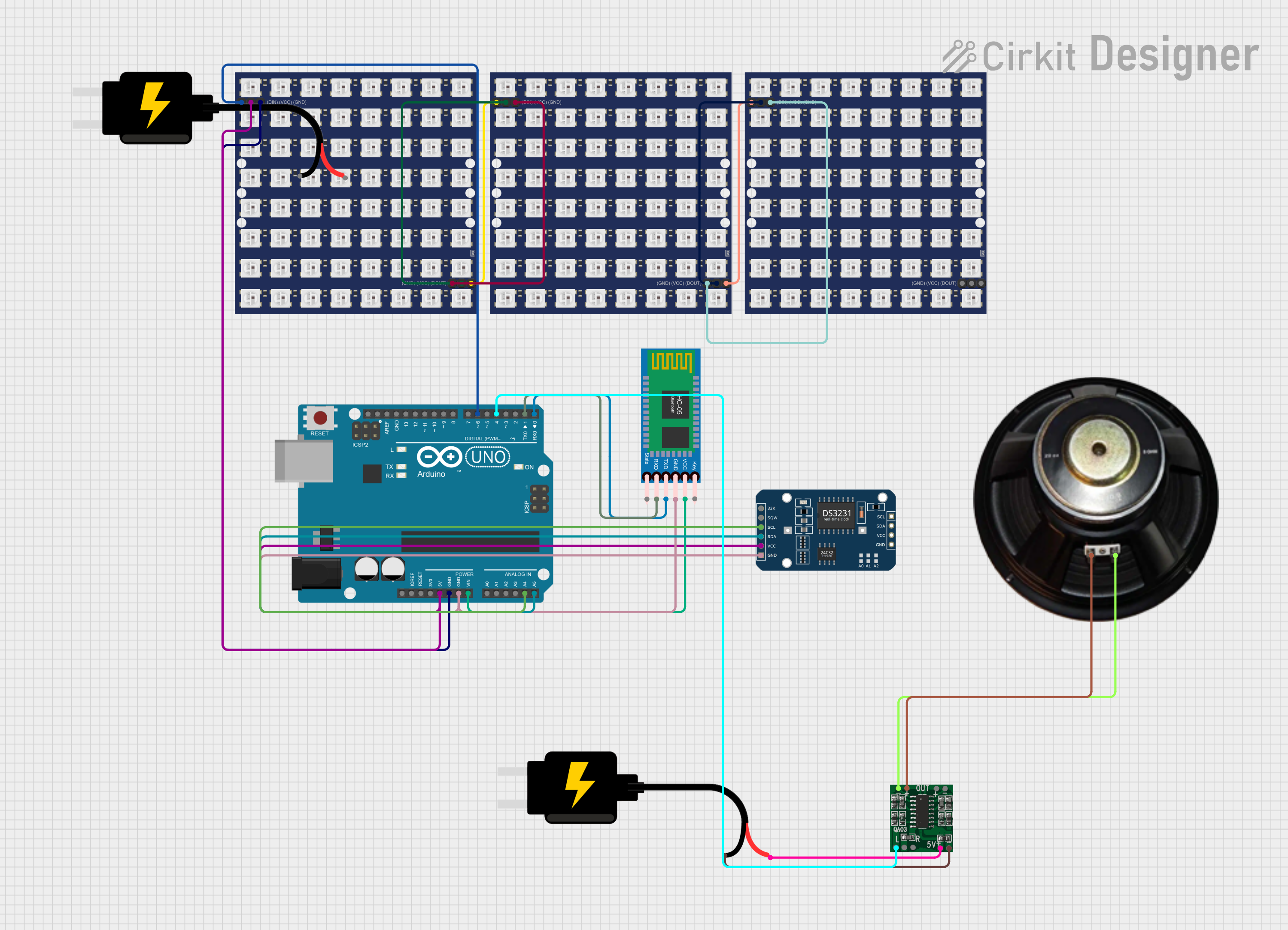
 Open Project in Cirkit Designer
Open Project in Cirkit Designer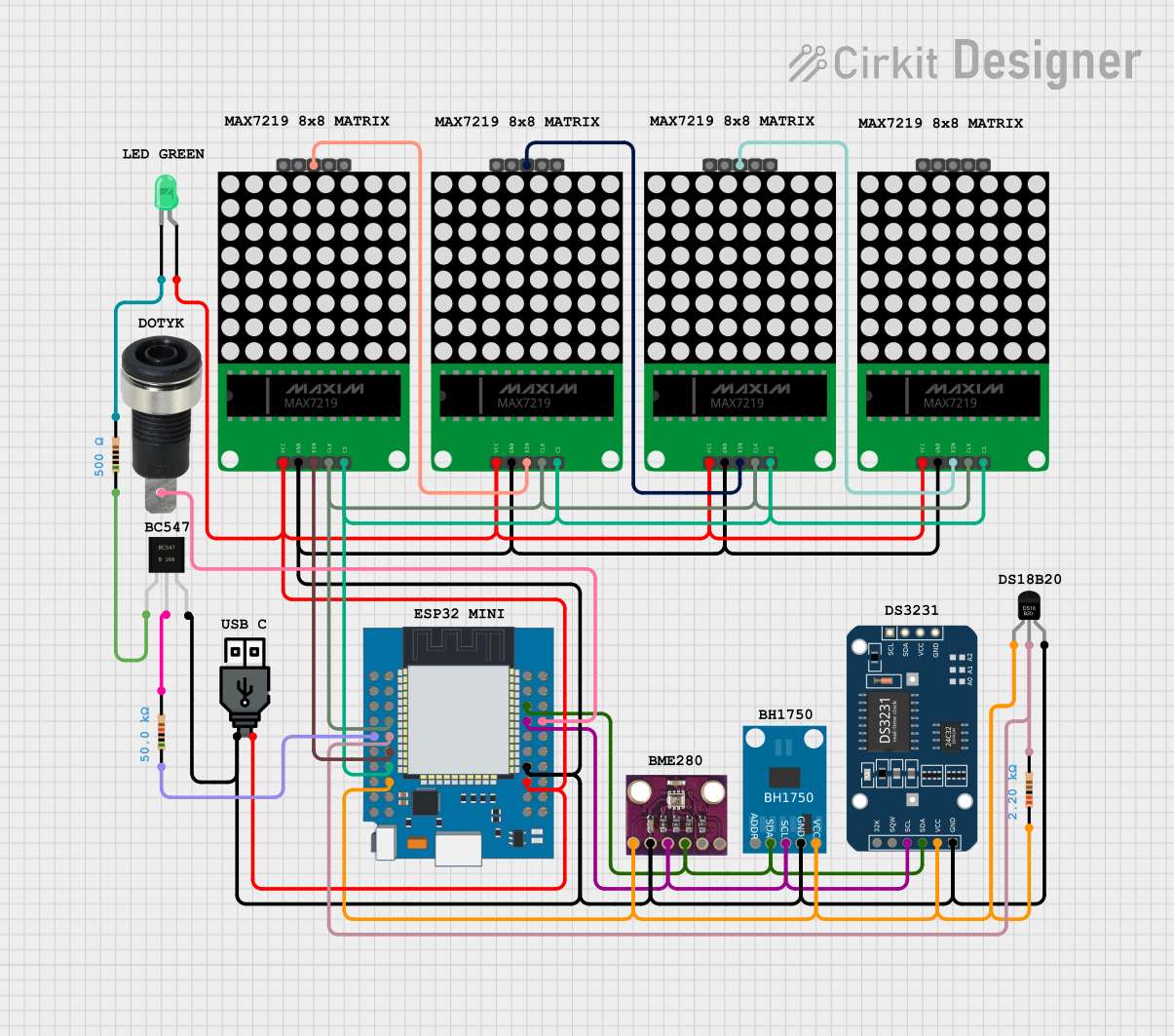
 Open Project in Cirkit Designer
Open Project in Cirkit DesignerExplore Projects Built with Adafruit Charlieplex 9x16 Green

 Open Project in Cirkit Designer
Open Project in Cirkit Designer
 Open Project in Cirkit Designer
Open Project in Cirkit Designer
 Open Project in Cirkit Designer
Open Project in Cirkit Designer
 Open Project in Cirkit Designer
Open Project in Cirkit DesignerCommon Applications and Use Cases
- Wearable electronics
- Small-scale message displays
- Battery-powered signs
- Decorative lighting
- Educational projects to demonstrate Charlieplexing
Technical Specifications
Key Technical Details
- Operating Voltage: 3.3V - 5V
- Maximum Current per LED: 20mA
- LED Wavelength: 565nm (Green)
- Communication Interface: I2C
- I2C Addresses: 0x70 (default) - 0x77 (selectable with solder jumpers)
Pin Configuration and Descriptions
| Pin Number | Name | Description |
|---|---|---|
| 1 | GND | Ground connection |
| 2 | VCC | Power supply (3.3V - 5V) |
| 3 | SDA | I2C Data line |
| 4 | SCL | I2C Clock line |
| 5 | ADDR | Address selection pin (connect to GND or VCC to change address) |
Usage Instructions
How to Use the Component in a Circuit
Power Connections: Connect the VCC pin to your power supply (3.3V - 5V) and the GND pin to the ground.
I2C Connections: Connect the SDA and SCL pins to the corresponding SDA and SCL pins on your microcontroller (e.g., Arduino UNO).
Address Selection: If using multiple Charlieplex boards, solder the ADDR pin to select different I2C addresses from 0x70 to 0x77.
Programming: Use the Adafruit LED Backpack library to control the LED matrix via the I2C interface.
Important Considerations and Best Practices
- Ensure that the power supply voltage does not exceed 5V to prevent damage to the LEDs.
- Limit the current per LED to 20mA or less to maintain the longevity of the LEDs.
- When daisy-chaining multiple boards, ensure that the total current does not exceed the power supply capabilities.
- Use pull-up resistors on the SDA and SCL lines if your microcontroller does not have built-in pull-ups.
Example Code for Arduino UNO
#include <Wire.h>
#include <Adafruit_GFX.h>
#include <Adafruit_LEDBackpack.h>
Adafruit_9x16CharlieplexedMatrix matrix = Adafruit_9x16CharlieplexedMatrix();
void setup() {
matrix.begin(0x70); // Start the matrix with I2C address 0x70
}
void loop() {
matrix.clear(); // Clear the matrix display
matrix.drawPixel(0, 0, LED_ON); // Turn on the LED at (0,0)
matrix.writeDisplay(); // Update the display with the changes
delay(500);
matrix.drawPixel(0, 0, LED_OFF); // Turn off the LED at (0,0)
matrix.writeDisplay(); // Update the display with the changes
delay(500);
}
Ensure that the Adafruit LED Backpack library is installed in your Arduino IDE before uploading this code to your Arduino UNO.
Troubleshooting and FAQs
Common Issues Users Might Face
- LEDs Not Lighting Up: Check the power supply connections and ensure that the I2C lines are properly connected to the microcontroller.
- Dim LEDs: Ensure that the power supply is providing sufficient voltage and that the current limiting resistors are correctly sized.
- Incorrect LED Patterns: Verify that the correct I2C address is being used in the code and that there are no soldering issues on the ADDR pins.
Solutions and Tips for Troubleshooting
- Double-check wiring connections and solder joints for any cold solder or loose wires.
- Use a multimeter to verify the voltage levels at the VCC and GND pins.
- If using multiple Charlieplex boards, ensure that each board has a unique I2C address.
- Check the Adafruit LED Backpack library documentation for additional functions and examples.
FAQs
Q: Can I use this board with a 3.3V system? A: Yes, the board is compatible with both 3.3V and 5V systems.
Q: How many of these boards can I chain together? A: You can chain up to 8 boards together, each with a unique I2C address.
Q: Do I need external resistors for the LEDs? A: No, the board has built-in resistors for current limiting.
Q: Can I control individual LED brightness? A: The board does not support individual LED brightness control, but you can achieve PWM-like effects through software by rapidly turning LEDs on and off.
For further assistance, consult the Adafruit support forums or the product's official documentation.